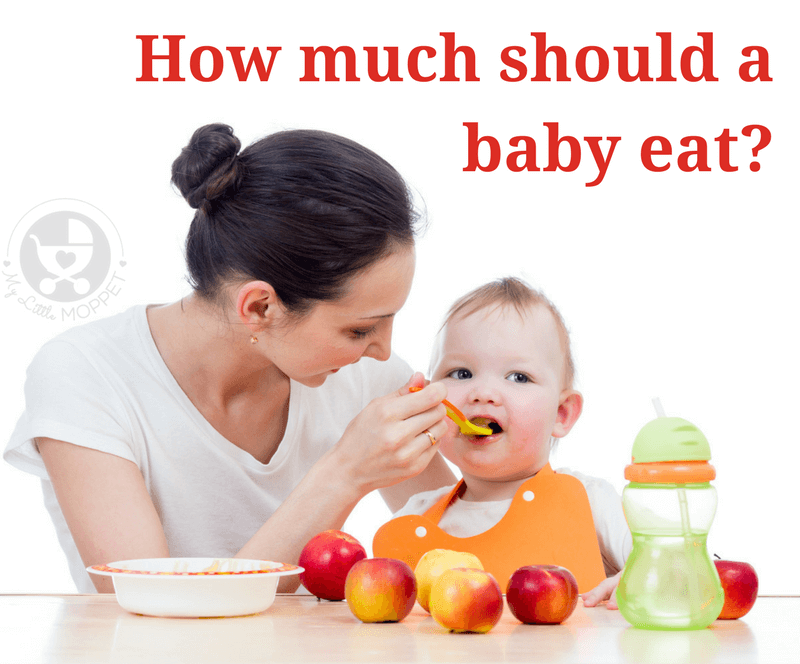Mama natural baby food
The (Surprising) Best Foods to Start With
Is baby ready for solids? Here are the top eight real and healthy first foods to start your baby on the right foot. Plus, three common first foods to avoid.
Once you know your baby is ready to try some solid food, the question becomes, what is the best first food? (No, it’s probably not a smash cake.)
Baby’s First Food
For most of us moms, we can’t wait till baby is 6 months old to introduce solids, at which point we may give baby pureed apples or avocado, or go the baby-led weaning route and give baby a few pear slices to gnaw on.
Good nutritional choices, right? Yes, but keep in mind that babies have special nutritional needs that benefit from a blend of animal and plant foods. (Our digestive tracts are designed for an omnivore diet, after all.) While kale and quinoa are great, they’re not necessarily the best first foods for baby.
Best First Foods for Baby
The foods below are extremely nutrient-dense. This is crucial, since baby’s digestive tract is still very small and immature—baby needs the biggest nutritional bang for his or her buck.
1. Egg yolk
While many parents might pause at introducing a highly allergic food like egg to a 6-month-old baby, new research shows that early introduction is critical to actually reduce the likelihood of food allergies. (source)
Start with the egg yolk, since it’s the easiest to digest and contains the most nutrients like choline (great for baby’s brain and eyes) and necessary cholesterol—the building block for all hormones. (source) Egg yolks also contain important minerals that baby needs right now, like calcium, zinc, selenium, phosphorus, and vitamins E and B6.
To prepare: Gently poach or cook egg yolks with a little butter, ghee, or coconut oil on the stovetop. Keep the egg yolk soft and a little runny for easier digestion.
2. Avocado
When it comes to baby’s first food, avocado is a great choice. It contains lots of healthy fats, as well as the almighty mineral magnesium, which is so crucial to our health yet is harder to get through food. Avocado also contains B vitamins, including niacin, vitamin E, vitamin K, potassium, folate, and fiber.
It contains lots of healthy fats, as well as the almighty mineral magnesium, which is so crucial to our health yet is harder to get through food. Avocado also contains B vitamins, including niacin, vitamin E, vitamin K, potassium, folate, and fiber.
To prepare: Peel and cut into long slices if you want your child to self-feed. You can also mash and spoon-feed. It’s delicious with banana for a 1:1 ratio.
3. Blended red meat
Why red meat? It’s one of the only foods high in three key nutrients that babies can be deficient in: iron, zinc, and vitamin B12. (source)
Keep in mind that breastmilk is low in iron (unlike formula), so baby must get it through his/her diet, but plant sources of iron are difficult to convert to a usable form, especially in a baby’s immature digestive tract.
To prepare: Get organic, pasture-raised beef or lamb. Ground beef, a tender roast, or lamb chops are all great options.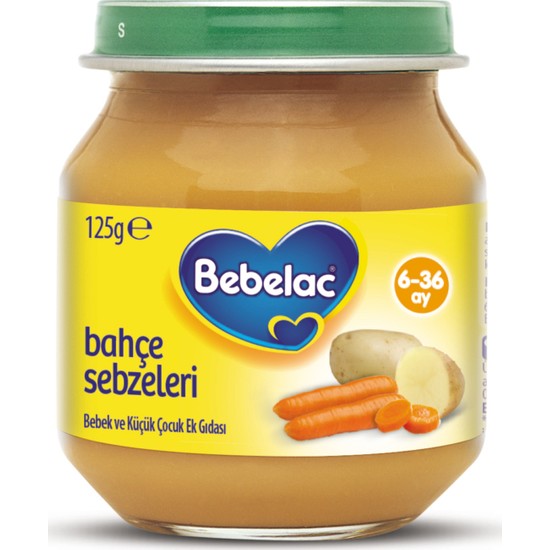 Cook gently and chop into tiny pieces if baby is self-feeding. Or, put it in a blender with some broth or water and blend into a creamy puree to spoon feed.
Cook gently and chop into tiny pieces if baby is self-feeding. Or, put it in a blender with some broth or water and blend into a creamy puree to spoon feed.
4. Banana
Some people believe that baby’s first foods shouldn’t include any fruit, because baby show a preference for the sweetness. Truth is, baby already has a preference for sweetness, thanks to breastmilk. Don’t worry about baby becoming a sugar bug because of fruit. Bananas are a great first carbohydrate source for babies, because they contain amylase, an enzyme necessary for the digestion of carbohydrates (like bananas). Bananas are also a great source of vitamin B6, vitamin C, manganese, magnesium, and potassium.
To prepare: Serve very ripe bananas with brown spots—the starch has converted to a simple sugar, making it easier to digest. Peel and cut in half for self-feeders, or mash up with a little avocado or breast milk.
5. Winter squash
Another easy-to-digest carbohydrate is well-cooked winter squash (i. e. acorn, butternut). And due to its low nitrate content, it’s a safe first food for baby. Squash is also high in vitamin A, vitamin C, magnesium, potassium, and manganese.
e. acorn, butternut). And due to its low nitrate content, it’s a safe first food for baby. Squash is also high in vitamin A, vitamin C, magnesium, potassium, and manganese.
To prepare: Cut open the squash and remove the seeds. Roast it in the oven for about an hour at 350 degrees, or until the squash is soft and the skin easily separates from the vegetable. Alternatively, put it in your Instant Pot with 1 cup of water and cook for 7 minutes. Let cool and scoop out the flesh. Cut it into slices for self-feeders or mash with a little butter or fat, which helps convert the beta-carotene into usable vitamin A. (source)
6. Yogurt
Organic whole yogurt is an excellent first dairy food, because it’s pre-digested and easier for baby to consume. It’sa well-balanced food with healthy fat, protein, and milk sugar to nourish baby. Plus, it’s high in calcium, vitamin D, and phosphorus. Yogurt is also naturally rich in health-promoting probiotics to help colonize baby’s gut with beneficial bacteria.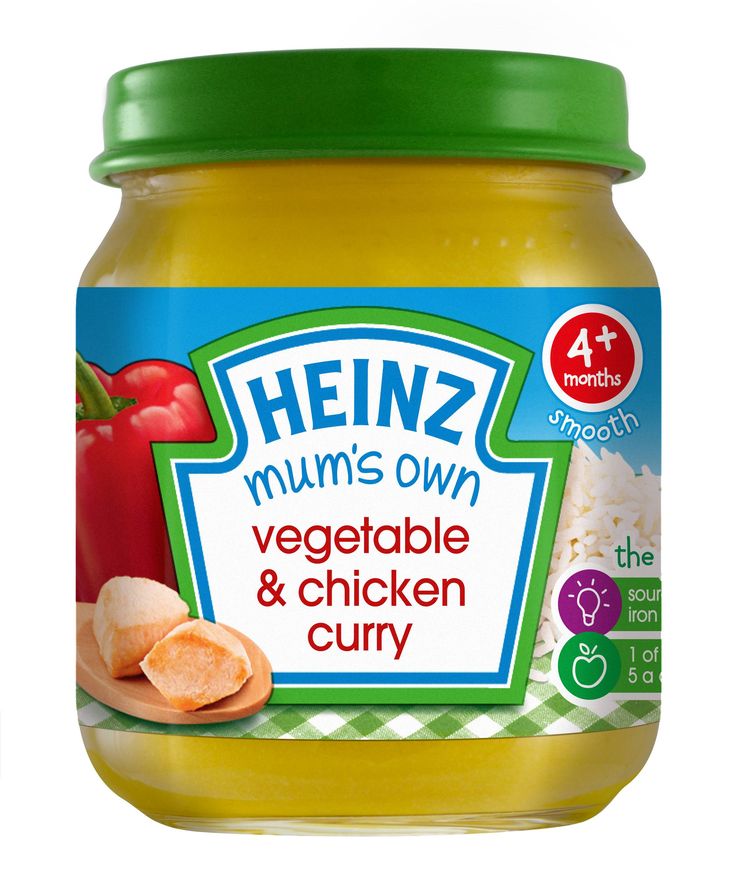
Note: Conventional wisdom said to wait until baby hit 8 or 9 months before serving yogurt, but new research shows that earlier introduction of common allergen foods, like dairy, may help prevent food allergies. (source) Of course, if you have a family history of dairy allergies or your child is immune compromised, it’s vital that you speak with your child’s pediatrician regarding best first foods for baby. Your doctor may recommend something like Ready Set Food as a safer and more scientific approach to introducing allergens.
To prepare: The key to introducing dairy is to go slow and watch for reactions. Start with 1 teaspoon of yogurt and serve to baby. Wait a day or two and slowly increase the quantity until you can serve 1/4 cup a day.
7. Green peas
If you want to introduce baby to green foods, start with green peas, which are high in resistant starch. Just as it sounds, this means they’re resistant to digestion, and pass through the stomach and small intestine into the large intestine, where it feeds good gut bacteria.
You may be surprised to learn that this small legume contains a wide range of vitamins and minerals. Just 1/2 cup of peas has 4 grams of fiber, 4 grams of protein, 34 percent of your daily value of vitamin A, and 34 percent of your daily value of vitamin K—a nutrient that can be particularly low in babies. (source)
If baby resists the taste, sweeten the deal by pureeing the green peas with some squash.
8. Organ meats
OK, I know this sounds out there, but organ meats are the most nutrient-dense of all animal foods. They used to be part of the American diet, but fell out of favor in the ’60s and ’70s. Most organ meat is high in true vitamin A, which is extremely important to baby’s development. Liver also contains vitamin A, D, all B vitamins, folate, zinc, and CoQ10. Chicken liver has a good amount of iron as well.
To prepare: A little goes a long way. Purchase high-quality, grass-fed chicken, beef, bison, or lamb liver.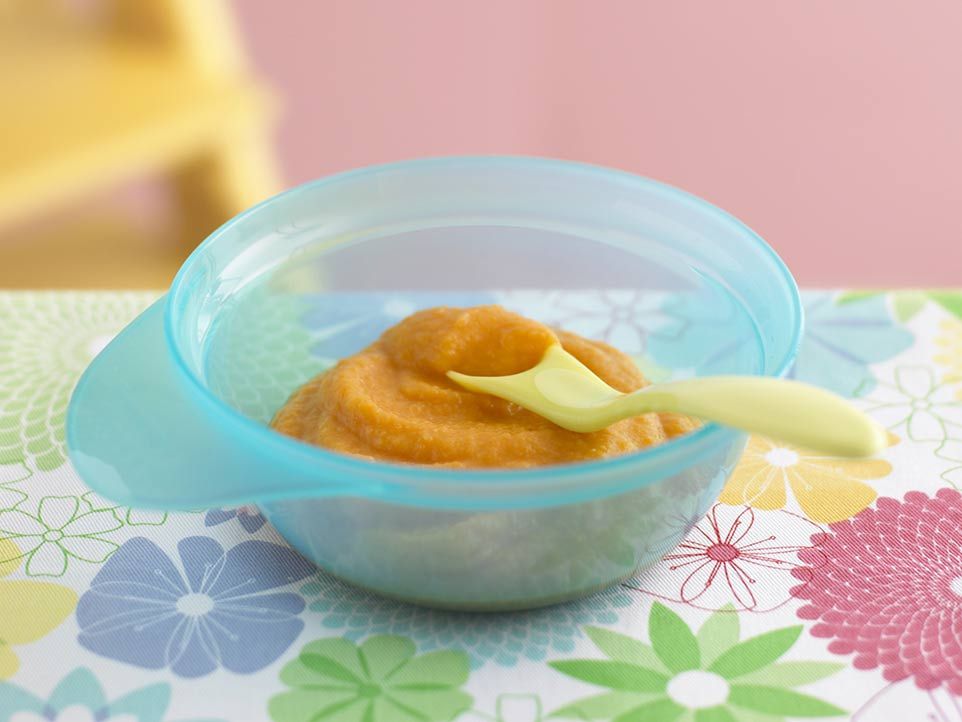 Cook over medium heat in a frying pan in a little ghee or coconut oil. Once one side is brown (not browned or burnt), flip the liver and brown the other side. (It cooks fast, so keep your eye on it.) Allow to cool and grate 1 tsp to 1 TB of liver over baby’s egg yolk or banana mash. Or, chop it into small pieces if baby is self-fed.
Cook over medium heat in a frying pan in a little ghee or coconut oil. Once one side is brown (not browned or burnt), flip the liver and brown the other side. (It cooks fast, so keep your eye on it.) Allow to cool and grate 1 tsp to 1 TB of liver over baby’s egg yolk or banana mash. Or, chop it into small pieces if baby is self-fed.
The (Surprising) Best First Foods for Baby – baby post by Mama Natural Pinterest
Get free updates on baby’s first year! – Free Updates on First Year [In-article]
Sign me up!
Nutrients for Baby
Want to expand baby’s menu beyond these eight items? There’s a saying: “food before one is just for fun,” and while that may be true when compared with an adult’s consumption, there are some important nutrients that baby needs from solids as he/she moves beyond 6 months of age.
According to Weston A. Price’s research (a dentist who spent 10 years researching the diets of different cultures to see what nutrients children most need to develop optimally), nursing babies at around 6 months of age need:
Price’s research (a dentist who spent 10 years researching the diets of different cultures to see what nutrients children most need to develop optimally), nursing babies at around 6 months of age need:
- Protein
- Fat
- Iron
- Zinc
- B6
- Niacin
- Vitamin E
- Calcium
- Phosphorus
- Magnesium and other trace minerals
- Omega 3 and omega 6 fats (in the proper balance)
At around 8 months, baby also needs:
- Vitamins A, B, C, D, and K
- Potassium
Foods to Avoid
While baby’s palate may be quickly expanding, baby shouldn’t have free reign. Here are a few foods parents should not feed to babies (some of them are rather surprising!):
1. High-nitrate foods
Root and leafy vegetables—think spinach, celery, lettuce, radishes, beets, turnips, and collard greens—are all very high in nitrates. Nitrates can turn into nitrites, which then turn into nitrosamines (a known carcinogen) in the stomach.
When to introduce? Wait until 6-8 months to give baby root vegetables; wait a year to give baby leafy greens. It’s also helpful to serve these foods with vitamin C-rich foods to avoid this nitrate to nitrite to nitrosamine conversion.
2. Acidic foods
Tomatoes and citrus can irritate the digestive tract in young babies.
When to introduce? Wait until at least 9 months.
3. Sweeteners
You obviously want to avoid giving your child too many sweets or processed foods. However, there is a time and place for a treat… for example their smash cake.
When to introduce? Natural sugars—think honey, maple syrup, or blackstrap molasses—may be introduced after baby’s first birthday in very small doses. (Raw honey can be very dangerous if offered to baby before the age of one.) You can also sweeten things using fruit (date, banana, applesauce, etc.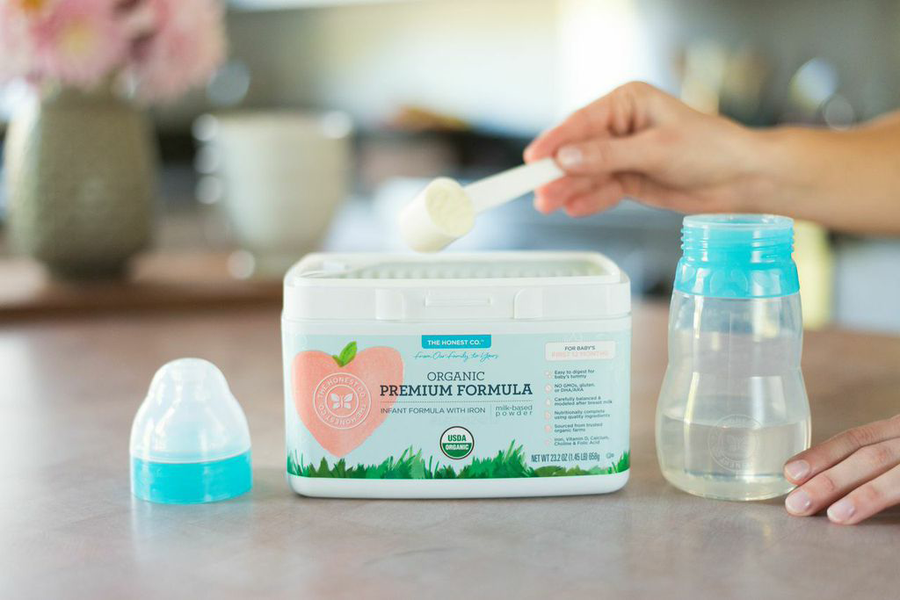 ).
).
What About Grains?
Whole grains can round out a healthy diet for young children, but don’t rush to serve them as a primary source of solid fuel. Newborns have almost no pancreatic amylase, a important enzyme that digests complex carbohydrates. (They do make plenty of salivary amylase by 6 months, which is designed to digest simple forms of carbohydrates found in fruits, vegetables, and breastmilk.)
So babies can’t digest grains?
While baby’s pancreas may not digest complex carbs very well, studies show that very little undigested starch is left in their poop. This may imply that the good bacteria in the colon uses this undigested starch as “food,” helping to populate their large intestine with good bacteria. We all know the benefits of a diverse and robust microbiome, including lower risks for just about every inflammatory disease out there, so incorporating pre-soaked, well-cooked grains to infants can be a good practice.
When to introduce? You can introduce grains at 6 months with a tablespoon or two of cooked grain a day. By 7-8 months, you can increase as appropriate, balancing with healthy fats, proteins, and fruits and veggies.
To prepare: Soak millet, quinoa, oats or barley in filtered water overnight with a dash of raw apple cider vinegar to help pre-digest grain. Cook long and slow so that the grain mixture turns into a type of porridge. Once cooled, add breastmilk to increase amylase content (yes, breast milk is rich in this starch-eating enzyme) and serve with a spoon.
What About Allergens?
Unfortunately, food allergies are on the rise. In fact, according to a new report, emergency room visits for anaphylaxis (an acute allergic reaction) more than doubled in children from 2010 to 2016. Those are some scary statistics when you’re thinking about what to feed your little one. The good news? There’s growing evidence that when babies are introduced to common allergens before their first birthday, they are less likely to develop allergies.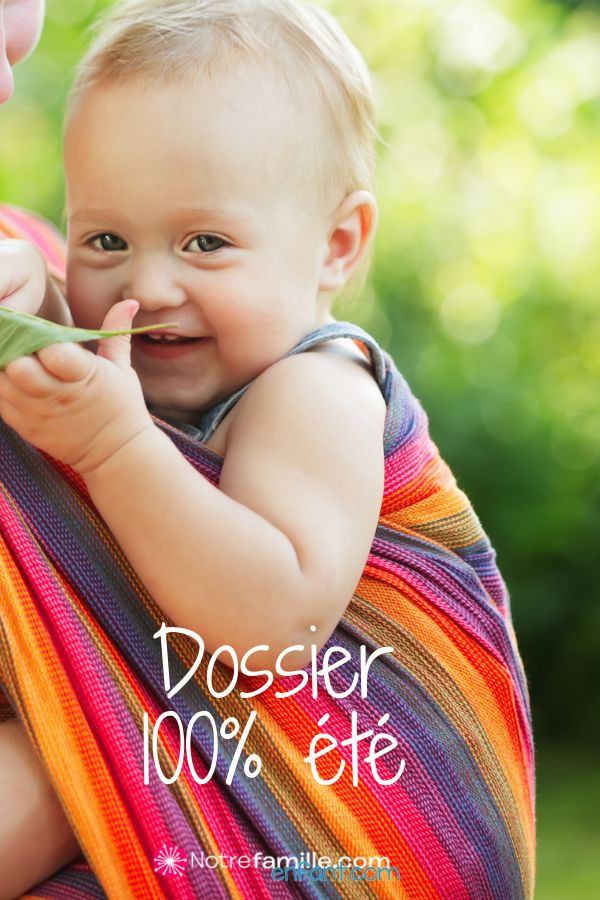
The importance of early and frequent allergen introduction starting at 6 months
As noted above, new studies about food allergy prevention show you can lower your child’s risk of developing a food allergy by up to 80 percent through early and sustained allergen introduction. What qualifies as early? Research shows that pregnant moms who eat nuts are less likely to have babies with nut allergies. And further research shows that once baby is ready to eat solid food around 4-6 months (See why Mama Natural recommends waiting until at least six months.), children at high risk of developing a peanut allergy were far less likely to develop an allergy when introduced to peanuts before they turned 12 months.
The key to prevention is not only dependent on timing, but also what you’re feeding baby and how often. Start with peanut, egg, and dairy foods like cheese or yogurt (don’t give baby cow’s milk to drink until they’re 12 months old), since they represent over 80 percent of the most common childhood food allergies. If you’re not sure how to get started, check out companies like Ready, Set, Food that have scientifically proven programs to help parents gently and slowly introduce known allergens. (Read more about allergen introduction.)
If you’re not sure how to get started, check out companies like Ready, Set, Food that have scientifically proven programs to help parents gently and slowly introduce known allergens. (Read more about allergen introduction.)
A Final Word on the Best First Foods for Baby
Babies thrive by eating solids from both the plant and animal kingdom. By nourishing your little one with nutrient-dense foods, they will have brighter minds and moods, physical strength, healthy immune systems, and protective microbiomes. Getting things off to a great start now, with these best first foods for baby, will help ensure lifelong health.
References
- https://www.westonaprice.org/modern-diseases/how-to-restore-digestive-health/
- https://www.westonaprice.org/childrens-health/nourishing-a-growing-baby/
- https://www.westonaprice.org/health-topics/the-liver-files/
- https://ndb.nal.usda.gov/ndb/nutrients/index
- https://bmjopen.
 bmj.com/content/6/5/e010665.full
bmj.com/content/6/5/e010665.full
Homemade Baby Food Recipes (Plus, How to Prep and Store)
Is baby ready to start eating solids? Where does a mama even begin? Get Genevieve’s best homemade baby food recipes, plus some helpful tips and tricks.
Pull out the bibs. Your little one is hitting a major milestone—eating solids. It’s an exciting time of researching and trying different homemade baby food recipes, storage techniques, and maybe even baby food makers.
With so much to learn and look into on this next leg of the journey, you likely have tons of questions about baby food for your infant. Here, we’ll cover:
When Do Babies Start Eating Baby Food?
Babies begin showing signs they’re ready to start exploring solids around six months. At this age, they have some trunk control and are able to hold their torsos upright. They’ll also show other signs of being ready to start baby food like being interested in your food, being able to support the weight of their heads, and being able to grasp objects or food between their thumb and forefinger.
At this age, they have some trunk control and are able to hold their torsos upright. They’ll also show other signs of being ready to start baby food like being interested in your food, being able to support the weight of their heads, and being able to grasp objects or food between their thumb and forefinger.
Learn more about introducing solids.
Homemade Baby Food Recipes: 6-8 Months
There are three important factors to consider when choosing baby’s first foods:
- Nutrient density: Babies have special nutritional needs and benefit from a mixture of animal and plant-based foods.
- Digestibility: Because baby’s digestive system is still very small and immature, baby needs the most nutritional bang for his/her buck.
- Taste variety: Exposing baby to a wide range of tastes and textures from an early age helps expand his/her appetite for different foods. (This is critical if you want to avoid having a picky eater on your hands!)
When baby is just beginning to eat solids, try single-food purees based on these great first foods or very simple combinations.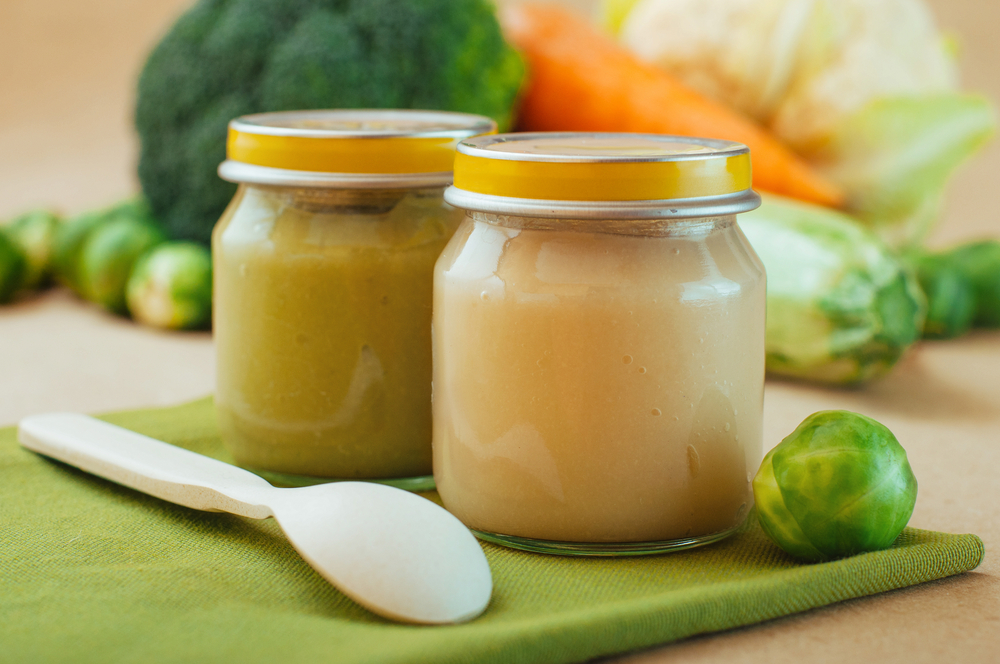 These recipes and combos are a good place to start:
These recipes and combos are a good place to start:
Banana and avocado
This delicious combo is easy to mash together for a satiating meal or snack. High in healthy fats, enzymes, prebiotics, and potassium, this combo has that sweet/fatty flavor that babies love… after all, breast milk has a similar profile!
How to:
- Scoop half a ripe avocado into a bowl.
- Add a ripe banana (the peel should be bright yellow with a few brown dots).
- Use a fork to mash the two foods together until a smooth consistency. (You can add a dash of breast milk or formula if your baby prefers a smoother texture.)
Squash and pear
Squash is easy to digest, plus high in vitamin A, vitamin C, magnesium, potassium, and manganese. Pear is high in fiber, vitamin C (so excellent for constipated babies!) and serves as a natural sweetener to help make this recipe more palatable to new eaters.
How to:
- Peel and cube one medium squash and one ripe pear.

- Fill a pot with 2 inches of water. Place a steamer basket inside. Add squash and pear and steam until soft, approximately 15-20 minutes.
- Use an immersion blender to puree. (FYI: You can use a bit of the steamed water to thin out puree if desired.)
Carrots and peas
This classic combo provides a great way to give your baby tons of nutrients like vitamin A, slow-releasing, energy-providing carbs, folate, and fiber.
How to:
- Peel and roughly chop two large carrots.
- Fill a pot with 2 inches of water. Place a steamer basket inside. Add carrots and steam approximately 10 minutes. Add peas and steam until everything is soft, approximately 5-10 minutes more.
- Use an immersion blender to puree.
Beef and stewed apples
Beef is high in both zinc and iron, two key nutrients for baby’s optimal health and growth. Lean, tender cuts are the best options. Choose tenderloin roast, strip steak, eye of round roast, or freshly ground beef.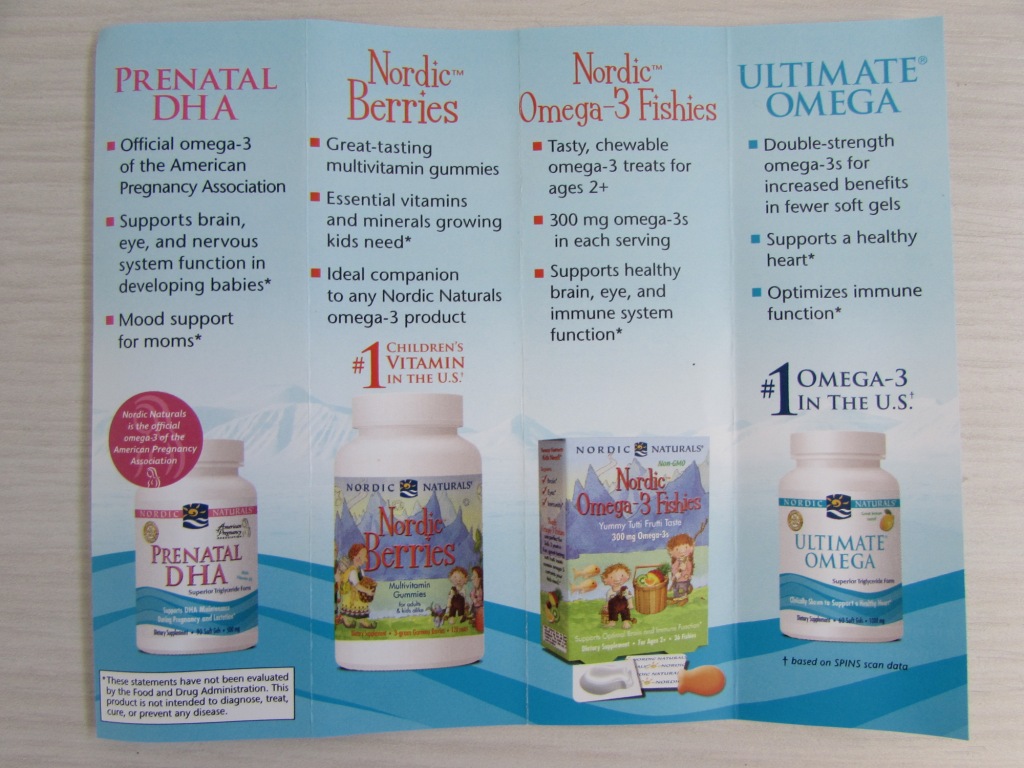
How to:
- Core and peel one apple.
- Simmer the apple and 1/4 cup of water over medium-low heat until soft, approximately 20 minutes.
- Place 8 ounces of cold, cooked beef in a blender. Add stewed apple and 1/4 cup of water. Blend until smooth.
Get free updates on baby’s first year! – Free Updates on First Year [In-article]
Sign me up!
Homemade Baby Food Recipes: 8-10 months
By the time baby is around 8 months old, you should begin to incorporate finger foods, if you haven’t already. Read about baby led weaning for more info on how to do so.
Around this time, you can also begin to introduce a wider range of foods, including:
- Stone fruits: plums, peaches, nectarines, prunes
- Green veggies: broccoli, asparagus, fennel, zucchini
- Seed-like grains: quinoa, amaranth, millet, buckwheat (just be sure to soak the grains—they’re easier to digest this way)
- Spices and flavors: minced garlic, diced onion, cinnamon, clove, oregano, thyme (start off with a scant amount, increasing as baby adjusts to stronger flavors)
- Good fats: coconut oil, grass-fed butter, chicken or beef liver, coconut milk, avocado (a very small amount—like 1 teaspoon—is enough)
Note: Don’t add salt to baby’s food—real food contains enough natural salt for baby’s needs.

These recipes and combos are a good place to start:
Chicken and plum puree
- Peel, pit, and dice three plums.
- Cut raw chicken breast into 1-inch pieces.
- Place plums and cut chicken into a pot with 1 cup of water.
- Simmer until chicken in fully cooked, approximately 20 minutes.
- Use a blender to puree fully or macerate.
Blueberry, quinoa, and cinnamon
- Soak quinoa, then cook according to package directions. (Or you this sprouted quinoa from TruRoots.)
- Use an immersion blender to puree cooked quinoa with fresh blueberries.
- Add a pinch of cinnamon.
Best oatmeal ever
This simple, easy, and delicious oatmeal is both mom and toddler approved.
Salmon and sweet potato
- Peel and roughly chop one large sweet potato
- Fill a pot with 2 inches of water. Place a steamer basket inside. Place sweet potato in the basket and steam for 10 minutes.

- Add a 4-ounce defrosted salmon filet and steam for 10 minutes more, until sweet potato is tender and fish is cooked through and flaky.
- Add a 1/4 cup of chicken or vegetable broth.
- Use an immersion blender to puree or chop into fine pieces.
Tropical Spirulina Smoothie
This is one of my all-time favorite smoothie recipes (and babies love it, too!). It’s healthy, but it’s also sweet, smooth, and green.
How to Store Homemade Baby Food
Unlike many store-bought baby foods, homemade baby food must refrigerated or frozen. After preparing, don’t leave it out at room temperature for more than two hours. And always store in airtight containers, like these from Sage Spoonfuls. Small sanitized mason jars also work.
It’s a good idea to store homemade baby food in 1-2 tablespoon servings for easy defrosting, mixing, and serving without tons of food waste. (This storage set is perfect for freezing small portions of food!) Remember, any remaining food from a feeding must be tossed.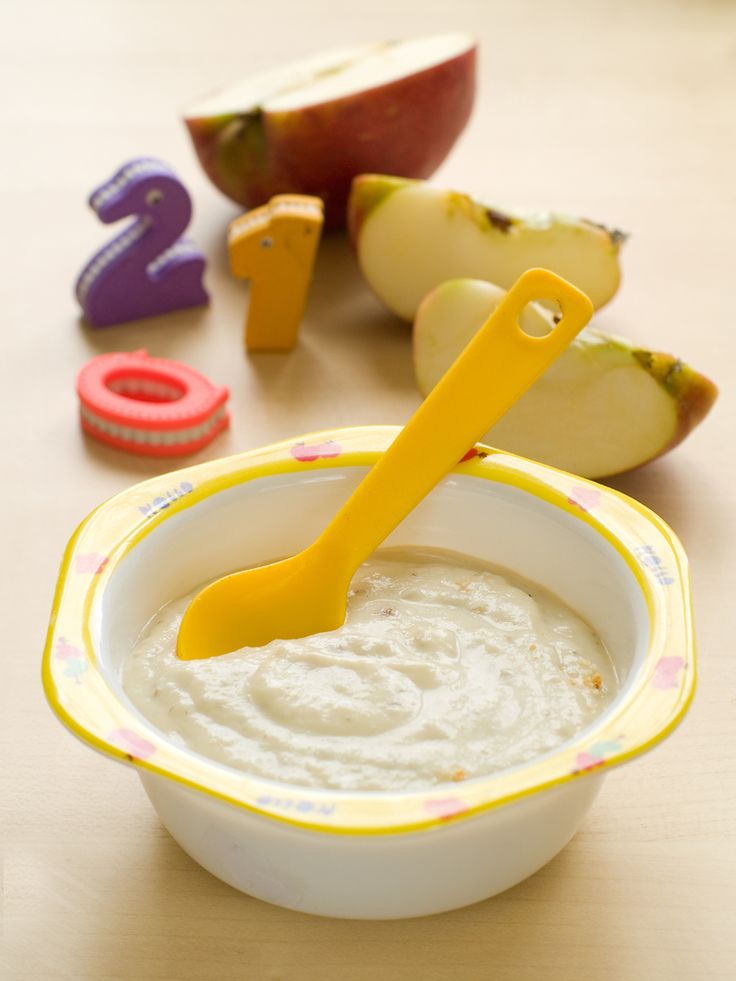
Baby food made with meat, poultry, seafood, or eggs can be safely stored in the fridge for 24 hours, while baby food made from fruits and veggies can be stored for 48 hours. Both can stay in the freezer for up to one month.
Tips for Making Baby Food
Skip the fancy equipment
There are tons of fancy baby food maker appliances that make preparing, storing, and serving homemade baby food a breeze. Two consistently top-rated options are made by Béaba and QOOC.
But the truth is, you really don’t need anything fancy to make quality baby food at home. All you need is a pot for steaming and a blender or an immersion blender. Heck, even a potato masher, ricer, spoon, or fork will do.
Keep it simple
While it’s tempting to go all-in on this exciting milestone, it’s important to start with single-ingredient foods prepared simply without a lot of extra salt, fat and spices. This approach not only allows your baby to get used to new textures and flavors, but also helps you pinpoint any allergies or sensitivities, should you child have a reaction to something.
Batch Cook
Introducing solids doesn’t have to be hard. Instead of making new baby foods every day, batch cook and freeze individual servings so you can whip out nutritious meals for baby quickly.
Also, combine baby’s food with family meal planning. For example, making roasted sweet potatoes and steamed squash for the family this week? Make extra, then chop, mash, or puree for baby. (These are great storage contraptions to put single servings in freezer or fridge for later.) Just be sure to omit fancy spices or salt on baby’s portion since their digestive tract is more sensitive.
Safety First
- Always wash your hands before preparing or handling food. This simple practice will go a long way in keeping you and your family healthy.
- Avoid contamination. Uncooked meat, eggs, poultry, and seafood should be kept away from cooked food. Meat, eggs, poultry, and seafood should be stored away from produce in the refrigerator.
 And use different cutting boards and utensils for unprepared animal-based food and produce, as well as cooked and raw food.
And use different cutting boards and utensils for unprepared animal-based food and produce, as well as cooked and raw food. - If you’re using well water, make sure to check the nitrate levels. Consuming high amounts of nitrates can be dangerous for babies.
- Clean produce and don’t use bruised or otherwise damaged produce to make baby food. For tougher produce, like beets and carrots, use a clean scrub brush and running water. For more delicate vegetables, a simple rinse with water will do.
I Don’t Have Time to Make Homemade Baby Food!
Though there are definitely benefits to going the DIY route, there are also plenty of quality baby food brands out there. Even if you decide to go 100 percent homemade, it’s still a good idea to keep a few shelf-stable options on hand in case of emergencies.
Some brands to check out include:
- Raised Real,
- Serenity Kids,
- Once Upon a Farm,
- and Earth’s Best.
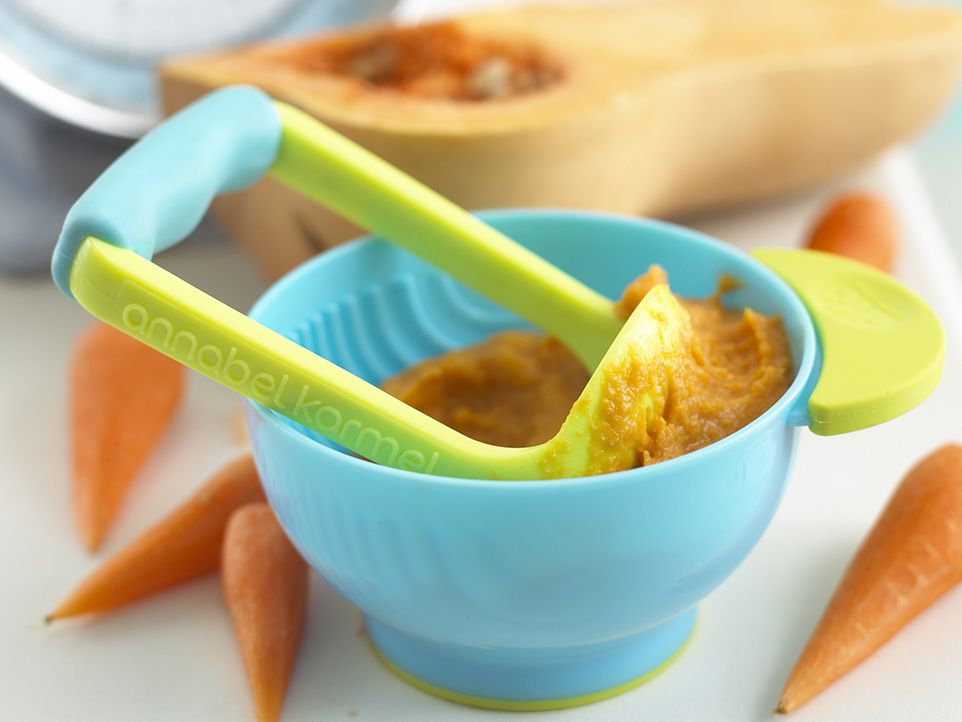
You can also do a hybrid approach again. I made “smoothies” by mixing Earth’s Best fruit purees with organic whole yogurt and fed Griffin in a cup with straw.
Remember…
This is a time to have fun exploring new foods with your baby. You’re setting the stage for a healthy future for your little one. With each spoonful or handful, baby is getting nutrients and learning to love new and nourishing flavors.
Naturalness is the basis of baby food
As an advertisement
Loving parents try to provide their child with complete and rational nutrition. However, opinions about what a child's diet should be often differ. It can be difficult for many to navigate and choose products that really suit the baby. Naturalness, pleasant taste, useful properties - how to achieve a combination of all these necessary and important qualities? Answers to frequently asked questions will help you choose the right products for the children's menu.
What role do organic foods play in a child's diet?
The child's body is highly sensitive. The child is actively growing and developing, and any negative impact can affect this process and affect children's health. But, for example, parents most often have to take a not very favorable environment for granted. However, nutrition is something that can and should be truly controlled. It is the right choice of healthy and natural products that helps to ensure the normal development of the child's body.
How to provide a child with natural nutrition in urban life?
Many parents think that only products prepared at home can be natural. But following this logic, you need to control the entire process of manufacturing the product. Few people have the opportunity to use milk from their own farm for fruit yogurt, and grow fresh fruit all year round on their own. In a metropolitan area, this is a difficult task. Therefore, a worthy alternative is baby food from well-known and respected manufacturers.
Therefore, a worthy alternative is baby food from well-known and respected manufacturers.
Can products made in a factory be natural?
According to Russian state standards, products for children should not contain artificial colors and preservatives. Well-known companies with a good reputation always monitor compliance with such rules. So, all Danone products comply with Russian and European standards. Modern technologies make it possible to ensure long shelf life due to strict quality control, sterility and production hygiene, and the preservation of nutrients. In addition, experienced nutrition and physiology specialists work on the development of baby food, taking into account the taste preferences and needs of children of a certain age.
What are fortified foods and what are they for?
A child needs a huge amount of useful substances for normal growth and development. And it is not always possible to get them from ordinary products in a sufficient amount. For example, a baby's daily need for calcium corresponds to the content of this element in a whole liter of milk. Therefore, in order to make baby food complete, special, enriched products are being developed. So, Rastishka fermented milk products have been created especially for children from three years old. They are additionally fortified with calcium for healthy bone growth and vitamin D, which improves calcium absorption.
For example, a baby's daily need for calcium corresponds to the content of this element in a whole liter of milk. Therefore, in order to make baby food complete, special, enriched products are being developed. So, Rastishka fermented milk products have been created especially for children from three years old. They are additionally fortified with calcium for healthy bone growth and vitamin D, which improves calcium absorption.
Is the plant suitable for my child?
Rastishka fermented milk and dairy products are made from natural milk and fruit puree and fully comply with the nutritional standards for children from three years of age. In addition, "Rastishka" takes into account the peculiarities of children's taste preferences. For example, fruit pieces are replaced with natural fruit puree, because many babies do not like heterogeneous food. Caring parents who carefully choose what is useful for their children need not worry: no artificial colors or preservatives are used in the production of Rastishka. The bright beautiful color of fermented milk products is the color of fruit puree, as well as natural dyes, such as beet juice.
The bright beautiful color of fermented milk products is the color of fruit puree, as well as natural dyes, such as beet juice.
The most modern technologies and strict quality control at the Danone plant in the village of Lyubuchany near Moscow, Chekhov District, allow preserving all the useful properties of Rastishka for a long time without the use of preservatives. The additional content of calcium and vitamin D, as well as the use of natural puree and milk, make "Rastishka" a suitable food product for children over the age of three. And you can be sure that you will not have to persuade the child to eat another spoonful!
Share
Tweet
Grade
Share
Follow us on social media
Baby food: the best foods for babies | Types of foods for children
Not all mothers and fathers know what is meant by baby food and when they can be offered to the baby. In the practice of doctors, there are many cases when a baby of 3-4 months is already given cow's milk, and vice versa - at the age of 8-9 months, meat puree is still not introduced into the diet.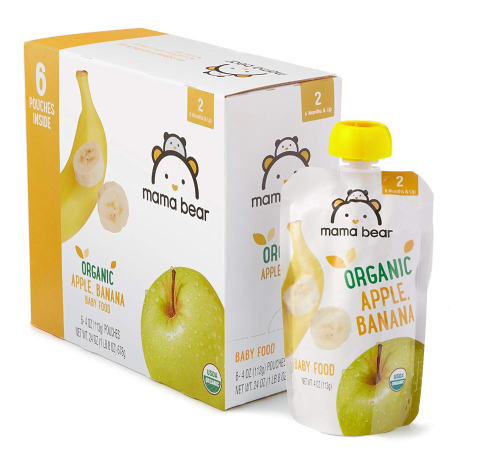
According to the WHO, it is recommended that complementary foods be introduced when the baby is 4-6 months old and should be done while breastfeeding continues. Complementary foods are understood to mean all liquid and solid foods that are offered to the baby - with the exception of breast milk itself and infant formula. In the Russian Federation, the introduction of complementary foods from 4-6 months is recommended.
In this article we will look at what kind of baby food is best for babies, what is recommended to use to expand the menu, how to choose and in what sequence to introduce foods into the diet of a child of the first year of life.
Choose foods for the first feeding
Kashi
Kashi is the best baby food for the first feeding of babies. They are made from cereals, contain a lot of carbohydrates, which give the baby energy for growth and development, and fiber, which contributes to comfortable digestion. This natural and healthy baby food is also a good source of vegetable proteins and fats. All Nestlé® baby cereals are additionally enriched with the Iron+ trace element complex, thanks to which the baby receives iron and other minerals from food.
All Nestlé® baby cereals are additionally enriched with the Iron+ trace element complex, thanks to which the baby receives iron and other minerals from food.
Dairy-free gluten-free hypoallergenic cereals - buckwheat, corn - should become the first cereal-based baby products. Then the baby's diet can be expanded and other cereals can be introduced:
- Dairy cereals from gluten-free cereals - for example, buckwheat porridge with dried apricots, rice porridge with apple.
- Cereals from cereals containing gluten - oatmeal, wheat.
- Porridge from a mixture of cereals - multi-grain porridge with pear and peach, banana and strawberry pieces.
Nestle® Kashi is an easy-to-use dry baby food. Just take the right amount of porridge and dilute it with breast milk or water - it's very easy. You can prepare a very tiny portion, which is important when the baby first meets a new product.
Important!
Complementary foods always start with small portions. If your baby is trying porridge for the first time, offer him no more than one teaspoon. Watch out for reactions; if everything is in order - the next day increase the portion to two teaspoons. With good tolerance, gradually, within 5-7 days, bring the serving volume to the age norm. If, in response to the introduction of porridge, the child develops a rash on the skin, the nature of the stool changes, he becomes restless - do not give this product yet. It will be possible to try again to introduce it into the diet in a month.
If your baby is trying porridge for the first time, offer him no more than one teaspoon. Watch out for reactions; if everything is in order - the next day increase the portion to two teaspoons. With good tolerance, gradually, within 5-7 days, bring the serving volume to the age norm. If, in response to the introduction of porridge, the child develops a rash on the skin, the nature of the stool changes, he becomes restless - do not give this product yet. It will be possible to try again to introduce it into the diet in a month.
Meat
Meat purees occupy a special place among baby foods. They are rich in protein, contain B vitamins, zinc, magnesium, and, most importantly, a lot of well-absorbed heme iron. By six months, the baby's iron stores are depleted, and a reliable source of this element should appear in his diet.
Meat is introduced into the diet as homogenized baby food. It is recommended to start with mashed light white meat - rabbit or turkey - they have the highest iron content. Then the menu includes more nutrient-dense meats: veal and beef.
Then the menu includes more nutrient-dense meats: veal and beef.
Vegetables
Vegetables contain carbohydrates, organic acids, fiber, pectin, various vitamins and minerals. Some of them, such as carrots and pumpkins, literally scream with their orange color about the large amount of beta-carotene, a provitamin from which the body produces vitamin A.
Puree is the ideal consistency for introducing crumbs to vegetables. Therefore, for children aged 4-6 months, all baby food should be homogenized. Pieces of food appear on the menu of the child closer to the year - and then very small.
For the first vegetable weaning, mashed marrows, broccoli, cauliflower are recommended. As your baby becomes familiar with simple foods, you can move on to purees with sophisticated flavor combinations, such as cauliflower and potatoes.
Note
There is a rule: one day - one new product. If you introduced mashed broccoli into your child's diet today, do not offer other new dishes yet.
Egg
Egg is not a first food product. Egg yolk can be included in baby food immediately after the first cereals and mashed potatoes, from 7 months. The yolks contain a lot of easily digestible proteins and fats, vitamin A and phosphorus. Choline is especially important - it favorably affects the development of the nervous system.
Fruits
Fruits are not only healthy, but also very tasty, because they contain a lot of natural sugars. They are also rich in vitamins and minerals, organic acids (citric, malic and others), fiber, which contributes to the comfortable functioning of the intestines. Baby fruit products are recommended to be introduced after the first feeding. It is better to start with fruits traditional for our country - apples or pears.
Some mothers think that natural baby food from fruits can only be prepared at home. Actually it is not. Factory products - the best companies involved in the production of baby food, carefully test raw materials for the absence of heavy metals, traces of fertilizers and other harmful impurities, and are also responsible for the proportions of nutrients declared on the packaging. It is impossible to achieve this at home.
It is impossible to achieve this at home.
Fruit juices
Fruit juices are one of the popular liquid baby food options. They are similar in vitamin and mineral composition to fruit puree (especially juices with pulp) - they contain potassium, iron, vitamin C and many other useful substances. And, of course, juices are a pleasant delicacy that kids really like and greatly expands the palette of baby food flavors.
Juices are introduced into complementary foods simultaneously with fruit puree and according to the same scheme. It is advisable to start with simple drinks from one fruit - for example, an apple or a pear, and only then indulge the crumbs with complex cocktails - such as a mixture of apple, grape and rosehip juices.
Fish
Like meat, fish in baby food will become a source of protein, B vitamins and other trace elements. In addition, it contains polyunsaturated fatty acids that are important for growth and development, which the child's body is not able to synthesize on its own in the right amount.
Babies can be offered fish from 8–9 months, replacing meat with it 1–2 times a week. When introducing fish, you need to remember that children have intolerance to this product. If fish feeding has led to allergies or other undesirable consequences, temporarily exclude fish from the diet and be sure to consult a specialist. It will help you choose the right foods for your baby.
Dairy products
Many parents in Russia believe that cow's milk is the best baby food, and this misconception is actively supported by the older generation. Don't believe it: whole cow's milk does more harm than good to babies and can cause digestive problems. In addition, milk contributes to too rapid weight gain, which in the future increases the risk of obesity, diabetes and other diseases.
Instead of cow's milk, the following solid and liquid baby foods are recommended for babies under 3 years of age:
- Children's products containing milk in small quantities - such as industrial milk porridges.
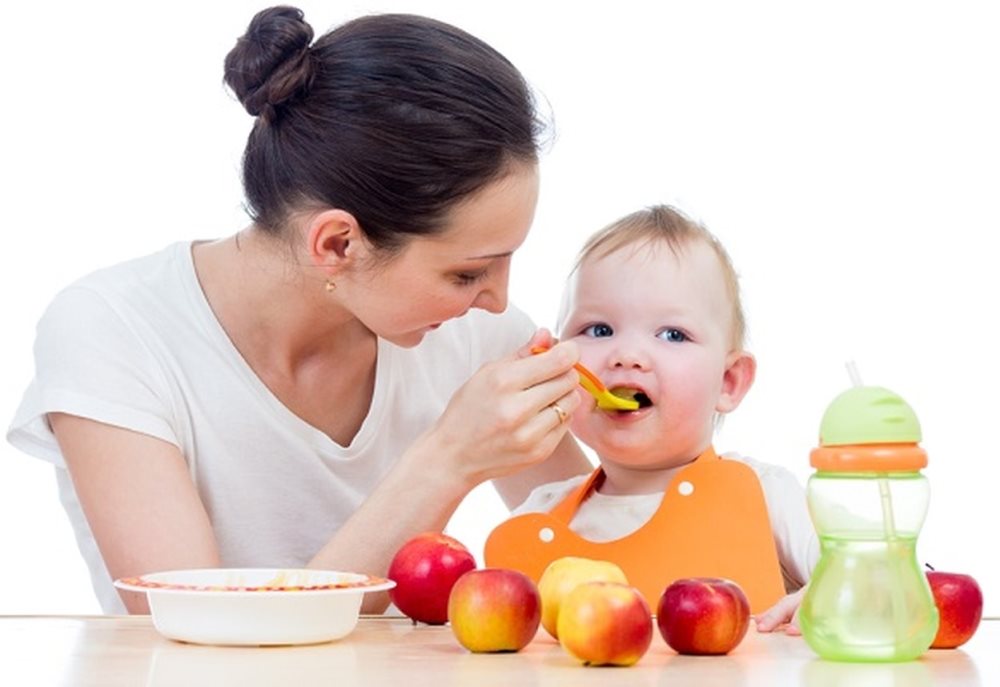
- Special for children after one year.
- Fermented milk products - special adapted drinks.
- Low-fat cottage cheese.
Water
In the first months of life, the baby receives the necessary amount of water from breast milk. However, as an independent product, water appears in the baby's diet almost simultaneously with the first complementary foods. It is used for breeding dry baby food - dairy-free and milk porridges, as well as just for drinking.
The choice of water must be approached responsibly. Pediatricians recommend buying a baby special bottled water for baby food. It is manufactured in compliance with strict bacteriological standards, does not contain radioactive and harmful chemical impurities, and is characterized by low mineralization. For parents, this water is convenient because it does not need to be boiled - but only if used within a day after opening the package.
Herbal teas
There are many herbal teas now available that are specially formulated for baby food. They contain medicinal herbs and fruits - fennel, mint, anise, chamomile, rose hips, raspberries and others.
They contain medicinal herbs and fruits - fennel, mint, anise, chamomile, rose hips, raspberries and others.
Sometimes berries, fruits, natural sugars are added to children's tea - this way the drink becomes more attractive for a little gourmet.
These children's products are a natural pharmacy that provides the baby with a complex of useful substances. However, some active components of herbal drinks can cause allergies, so teas should be introduced into the baby's diet with extreme caution.
Consult your paediatrician before starting weaning foods. A doctor who has been observing your child since birth will tell you what foods will benefit him, where to start getting acquainted with new dishes, and what points you should pay attention to.
- 1. National program for optimizing the feeding of children in the first year of life in the Russian Federation. Union of Pediatricians of Russia. Moscow 2019.
- 2. Feeding and nutrition of infants and young children.





